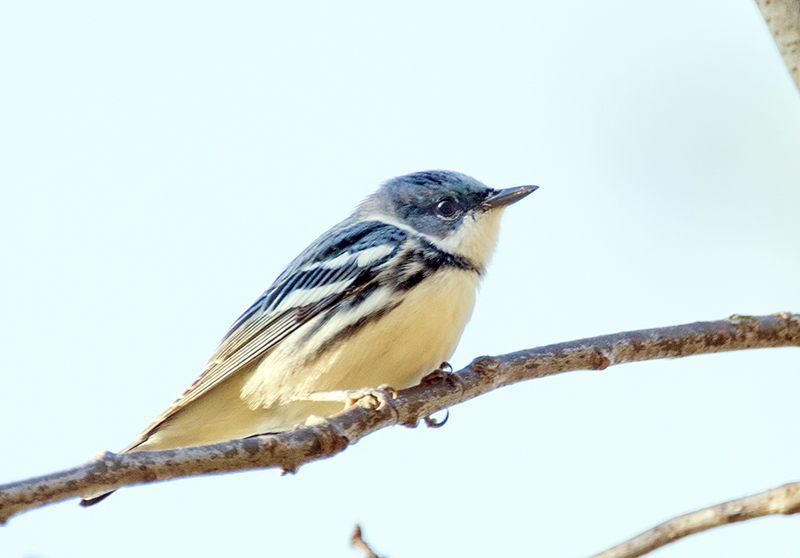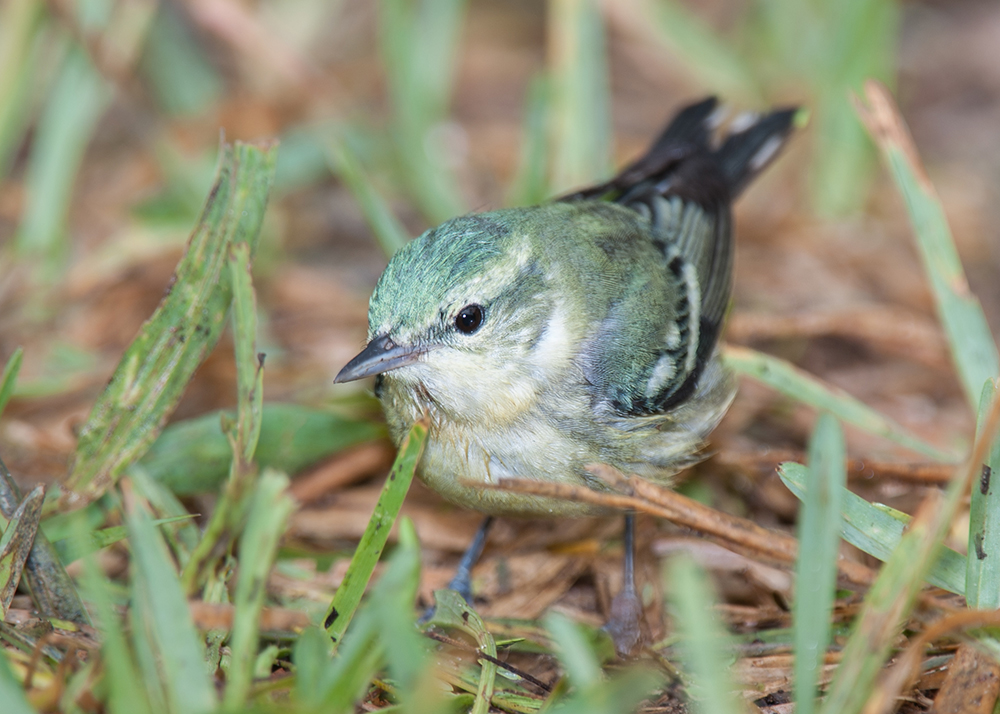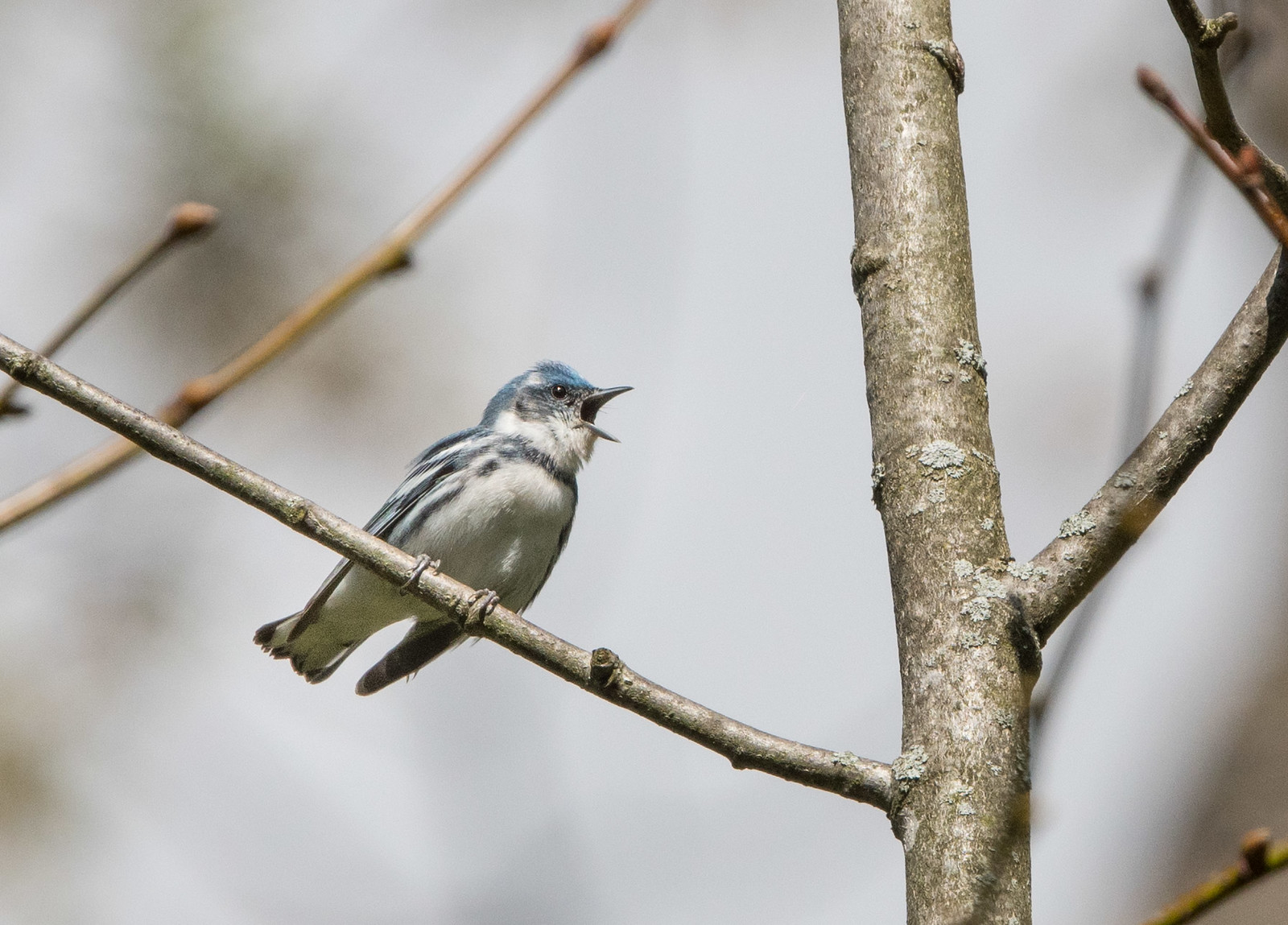| Early Spring Date: | April 28 | Late Spring Date: | May 16 |
| Infrequently Seen | |
Spring: Cerulean Warblers have become the poster bird for the songbird conservation movement. They are the fastest declining Neotropical migrant songbird because of habitat loss in both their breeding and wintering areas. Very few have been seen at Monticello Park. They nest in mature deciduous forests, often near water. They used to nest along the C&O Canal in Montgomery County, but no longer. The closest reliable breeding area to see them is the G. Richard Thompson Wildlife Management Area in Markham, Virginia, about 70 miles west of Washington.
Fall: A Cerulean Warbler has been recorded only once at Monticello during the fall.
Where to See Them in the Park
Cerulean Warblers typically stay in the canopy, so even when they are at Monticello, they can be difficult to see. Some might pass through the park during the spring who are not seen.
Physical Description

The Cerulean Warbler is small and round with a short tail. The male's back is a lovely sky blue. His underparts are entirely white, except for a dark band on the breast. He has two white wingbars and dark streaks on his sides.


The female can be difficult to identify. The feathers on her back are olive with a light green wash. The light green coloring is probably the best fieldmark, although it can be difficult to see well in the field. She has two white wingbars.
Vocalizations

The song of the Cerulean Warbler features four quick buzzy notes followed by a buzzy trill.
Hear the vocalizations of the Cerulean Warbler.
Notes
Jonathan Franzen, who is active in the bird conservation movement, used the decline of the Cerulean Warbler in the plot of his 2010 novel Freedom, and a Cerulean is on the cover. The following year, Katie Fallon published a book about the species entitled Cerulean Blues: A Personal Search for a Vanishing Songbird. The word "cerulean" is of uncertain origin, but it probably comes from the Latin. It was a term applied to the color of the sky or the Mediterranean Sea. The ancient Greeks classified colors by whether they were dark or light rather than by their hue, so the term they used for dark blue also applied to black or dark green. Caeruleus was one of the words the ancient Romans used for different shades of blue.
Origin of Names
Common Names: Cerulean from its sky blue plumage. The New World Warblers were named for their similar appearance to European warblers, to whom they are not related. Most of the New World warblers do not warble (sing continuously with notes that change frequently).
Genus Name: Setophaga means moth eating.
Species Name: Cerulea means sky blue.
Cerulean Warbler video footage
Return to the Index
